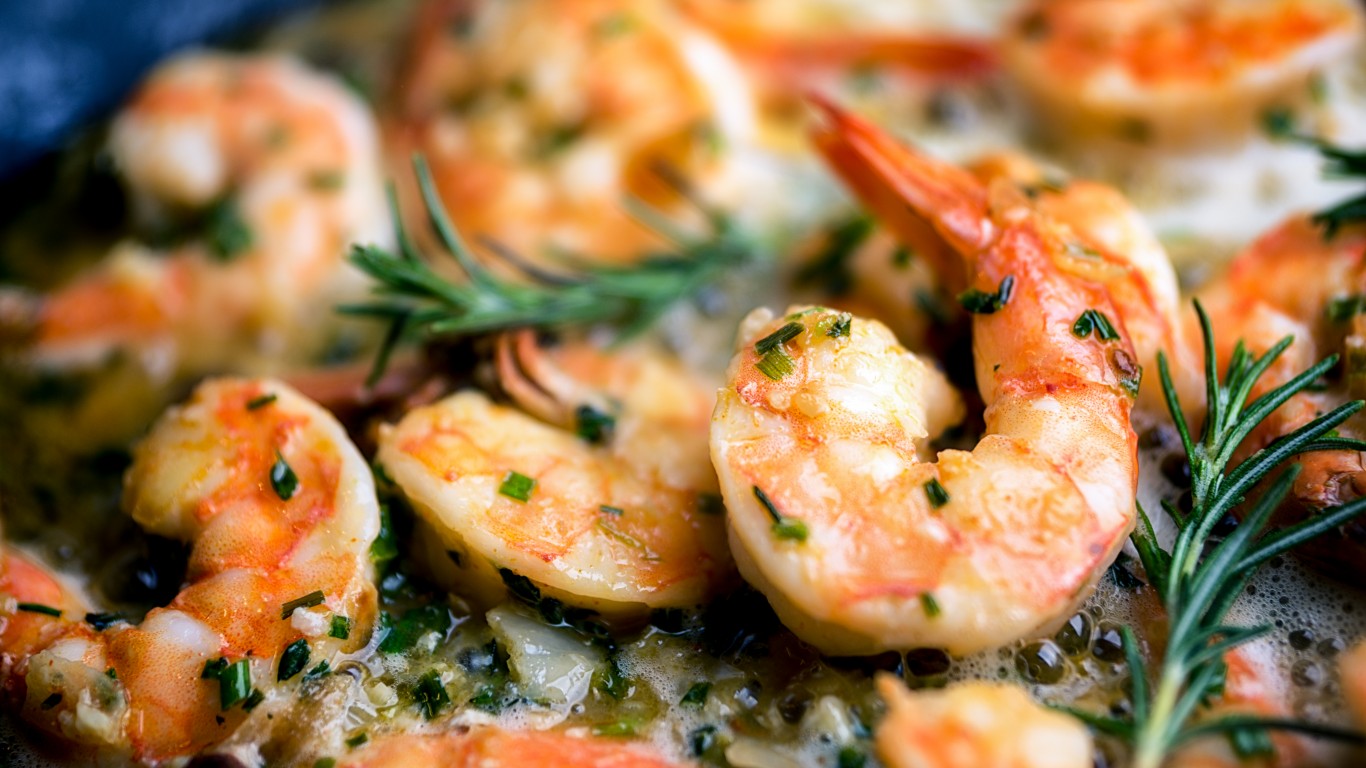
Fish and shellfish form an important part of a healthy diet. Many varieties are high in Omega-3 fatty acids, known for contributing to brain and heart health and helpful in combating arthritis, diabetes, depression, and other afflictions. Unlike animal fat, oily and fatty fish flesh is good for you; counterintuitively fatty fish are considered a “lean” source of protein. (Eating fatty fish is one of the healthy eating habits that will change your life.)
Depending on the variety, fish also contain a range of other vitamins and minerals, including selenium, potassium, magnesium, B vitamins, and even vitamin D, which is otherwise rarely present in the food we eat. (These are the most common nutritional deficiencies among Americans.)
Not all fish is completely safe to eat, due to various contaminants, most commonly mercury, a highly toxic metal that can have serious health consequences. However, even fish with some mercury content is often filled with healthful Omega-3 fatty acids and other valuable nutrients — and is often quite delicious — so is considered worth choosing occasionally.
Click here to see the best seafood to eat
Taking into consideration not just their flavor but their nutritive value and their comparative lack of potentially harmful contaminants, 24/7 Tempo has assembled a list of some of the best seafood varieties to eat. The recommendations are based on medical websites, including WebMD, One Medical, Healthline, and Medical News Today, as well as nutritional information published by the FDA, and in some cases on environmental sources, including the Monterey Bay Aquarium’s Seafood Watch, Greenpeace, and Sustainable Fisheries.
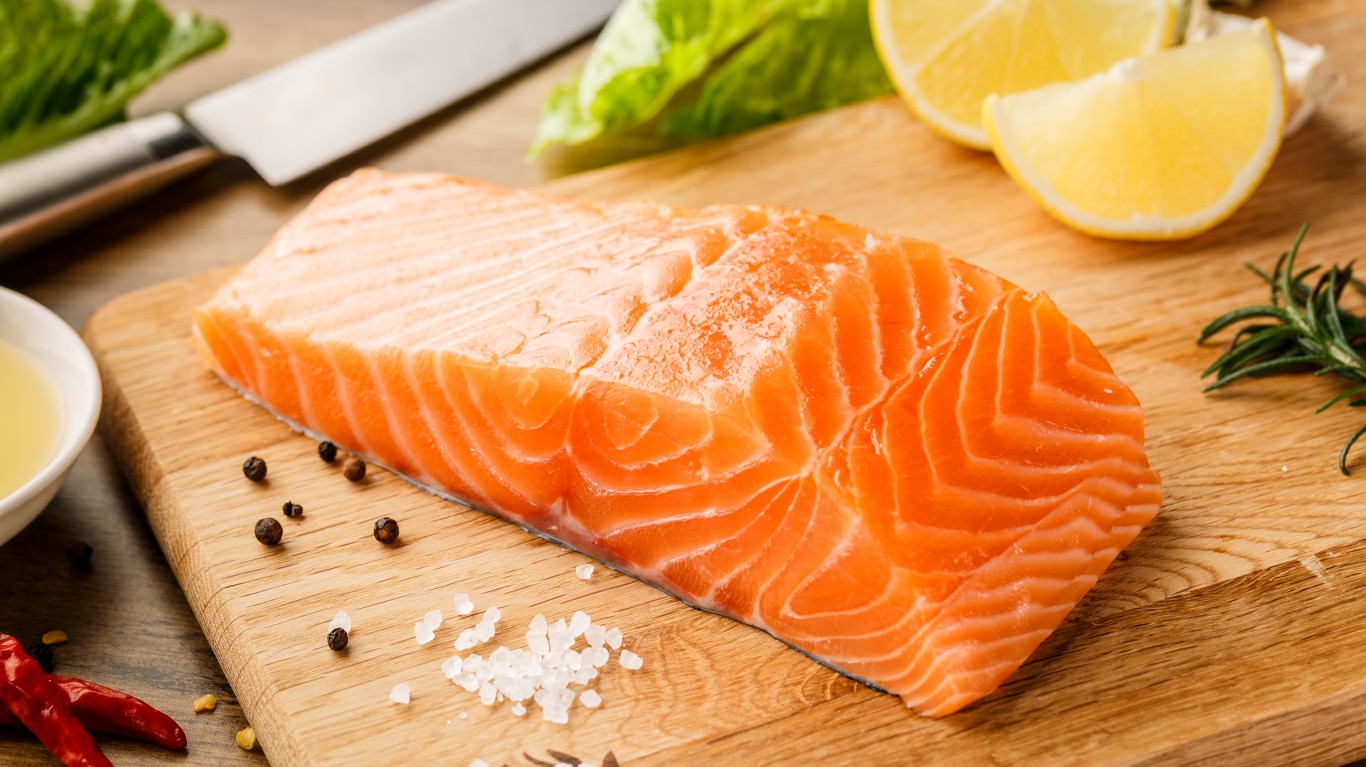
1. Wild salmon
> Benefit: High in Omega-3s
> Farmed or wild caught: Wild
Commercial fishing for Atlantic salmon is banned, but luckily for fish-lovers, Pacific salmon is widely caught in Alaska and to a lesser extent along the coasts of Washington, Oregon, and California. The water quality of Alaskan fisheries in particular is high, and salmon numbers are closely monitored to ensure sustainability. The fish itself is highly nutritious, providing protein, magnesium, potassium, selenium, and B vitamins. It is also generally much tastier than farmed salmon.
[in-text-ad]
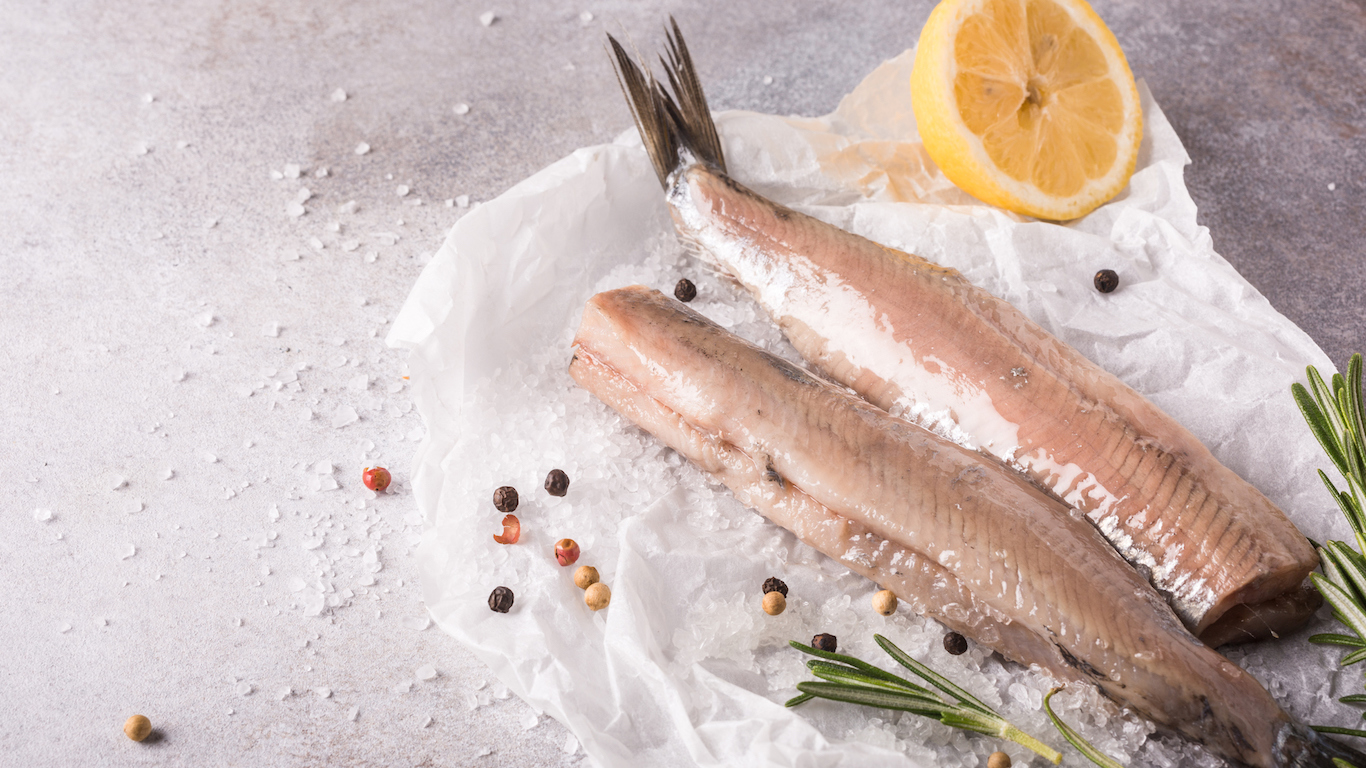
2. Herring
> Benefit: High in Omega-3s
> Farmed or wild caught: Wild-caught
Like salmon, herring and sprats (a close relative) are fatty fish with plenty of Omega-3s. They are also abundant in both the Atlantic and Pacific, with no environmental concerns. Smoked herring can be high in sodium and prepared versions with sweet or creamy dressings add calories, so these are best eaten in moderation.
3. Anchovies
> Benefit: High in Omega-3s
> Farmed or wild caught: Wild-caught
Anchovies, sometimes termed a “superfood,” are an excellent source not only of Omega-3s but of selenium, niacin, potassium, and vitamin B-12, among other nutrients. Be aware that they’re commonly preserved with excessive salt, so should be eaten in moderation. (Some European anchovies are fished unsustainably, so their consumption is discouraged.)
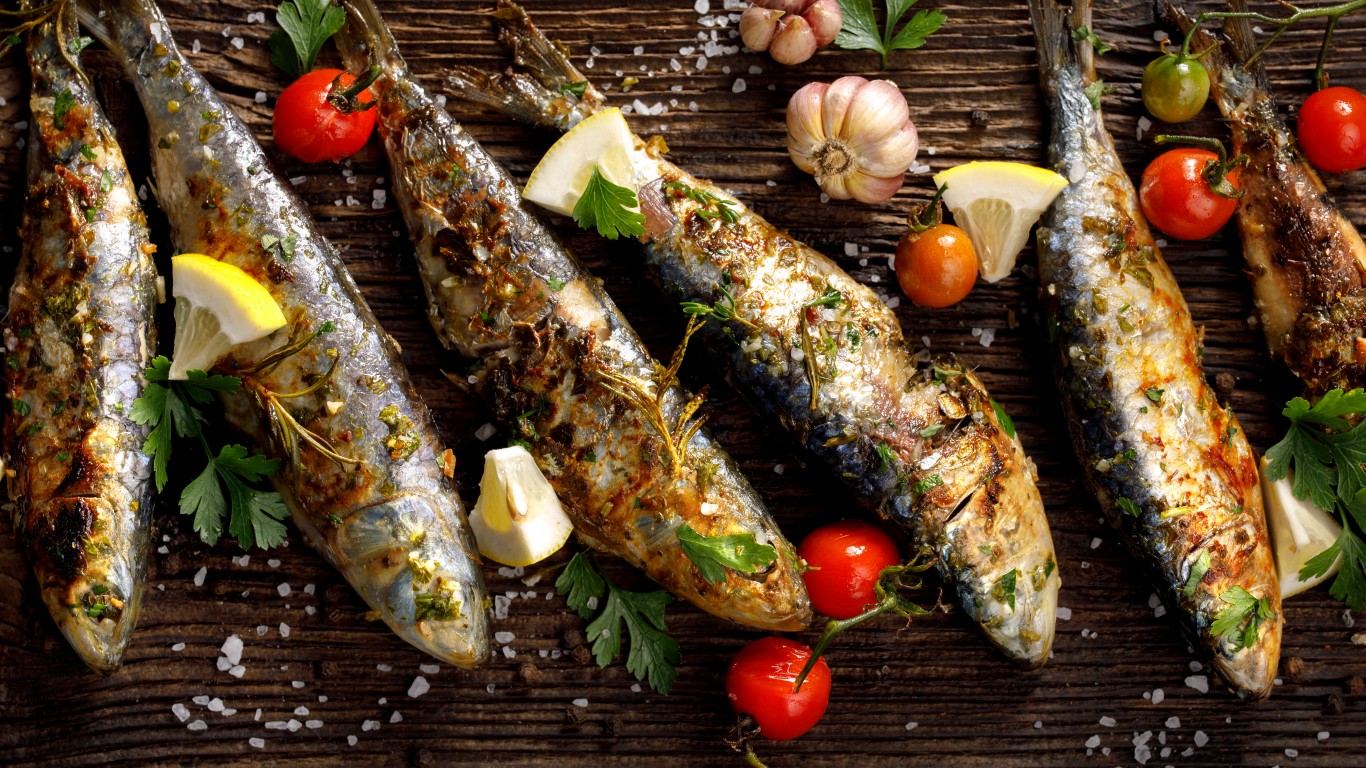
4. Sardines
> Benefit: High in Omega-3s
> Farmed or wild-caught: Wild-caught
Like anchovies, sardines are often considered a superfood because of their high levels of Omega-3s and other nutrients — especially selenium, phosphorus, and vitamin B-12. According to Seafood Watch, South American and European varieties may be harvested unsustainably, but the Pacific sardines that are most widely sold in the U.S. are fine.
[in-text-ad-2]
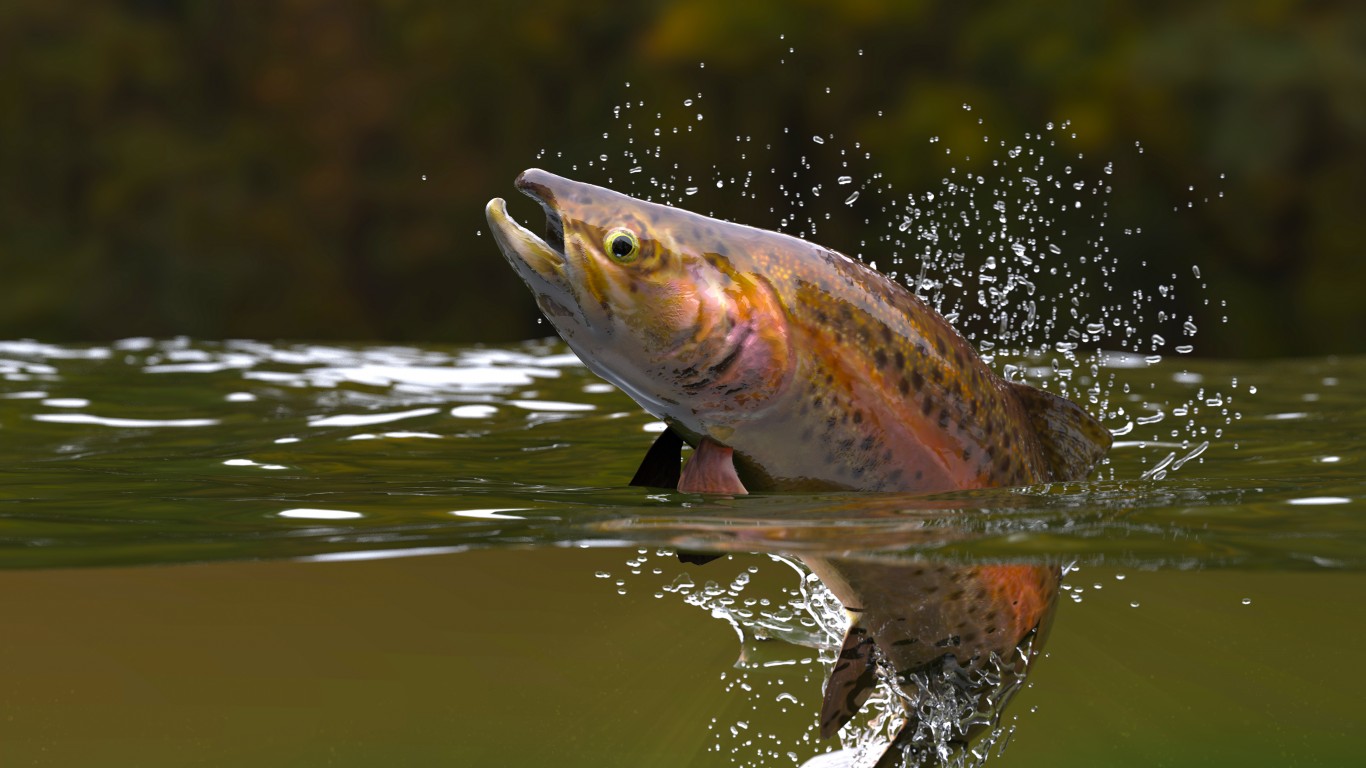
5. Rainbow Trout
> Benefit: High in Omega-3s
> Farmed or wild-caught: Farmed
One of the healthiest fish you can eat, farmed rainbow trout — the only kind you’re likely to find sold commercially in the U.S. — is a good source of fatty acids, protein, potassium, and vitamin D. Trout from natural lakes tend to be contaminated from agricultural runoff, while farmed trout are protected from contamination and raised on sustainably managed diets.
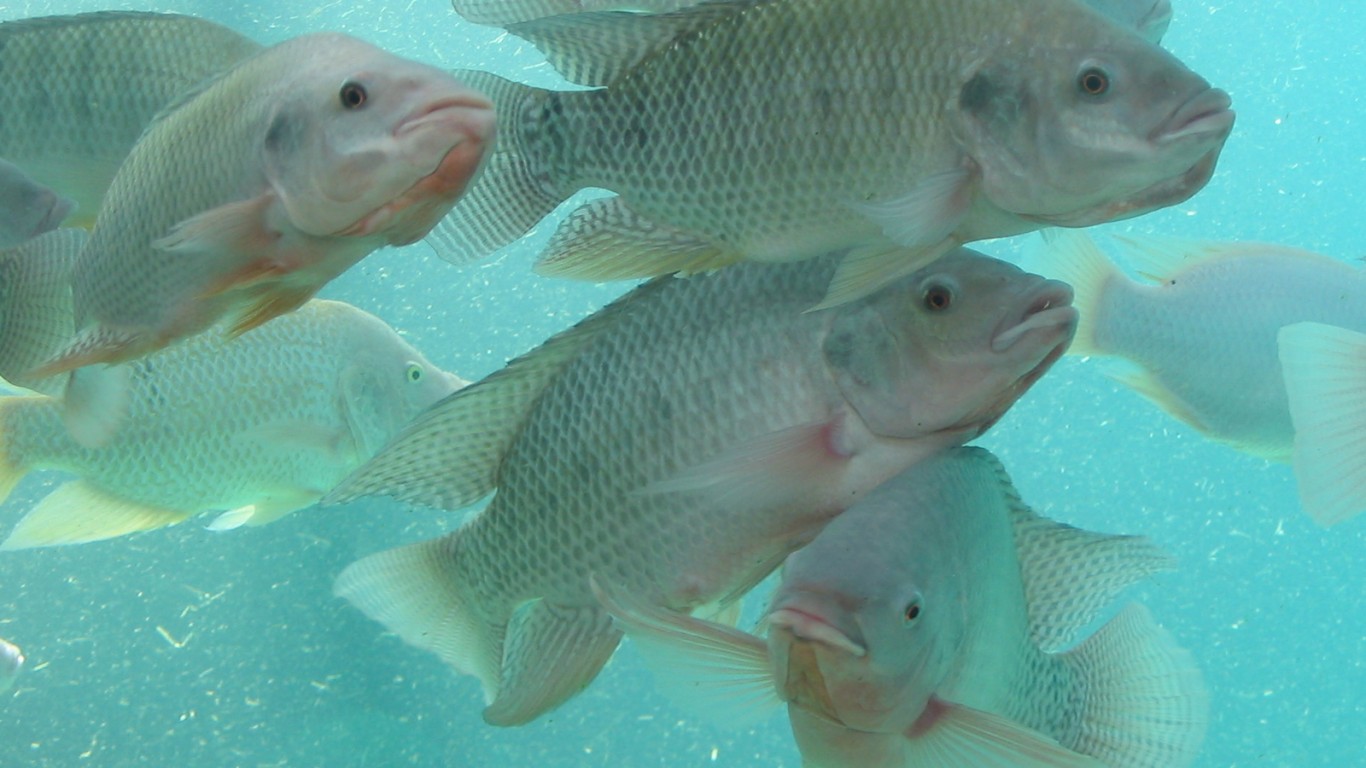
6. Tilapia
> Benefit: Low in calories, high in protein and other nutrients
> Farmed or wild-caught: Farmed
While farm-raised tilapia from China may be contaminated with toxins and is farmed in ways that negatively impact the environment, the equivalent from the United States, Canada, the Netherlands, Peru, and Ecuador is recommended. It is a particularly good source of vitamin D and cobalamin, a B-complex vitamin. Wild tilapia is rarely sold.
[in-text-ad]

7. Pacific cod
> Benefit: Low in calories, high in protein and other nutrients
> Farmed or wild-caught: Wild-caught
Since the 1990s, overfishing has pushed Atlantic cod to the brink of extinction, though rebuilding plans have been in process for the last few years and cod numbers are expected to recover in this decade. Pacific populations, however, are stable, and this popular flaky fish is a good source of protein, phosphorus, and vitamin D.
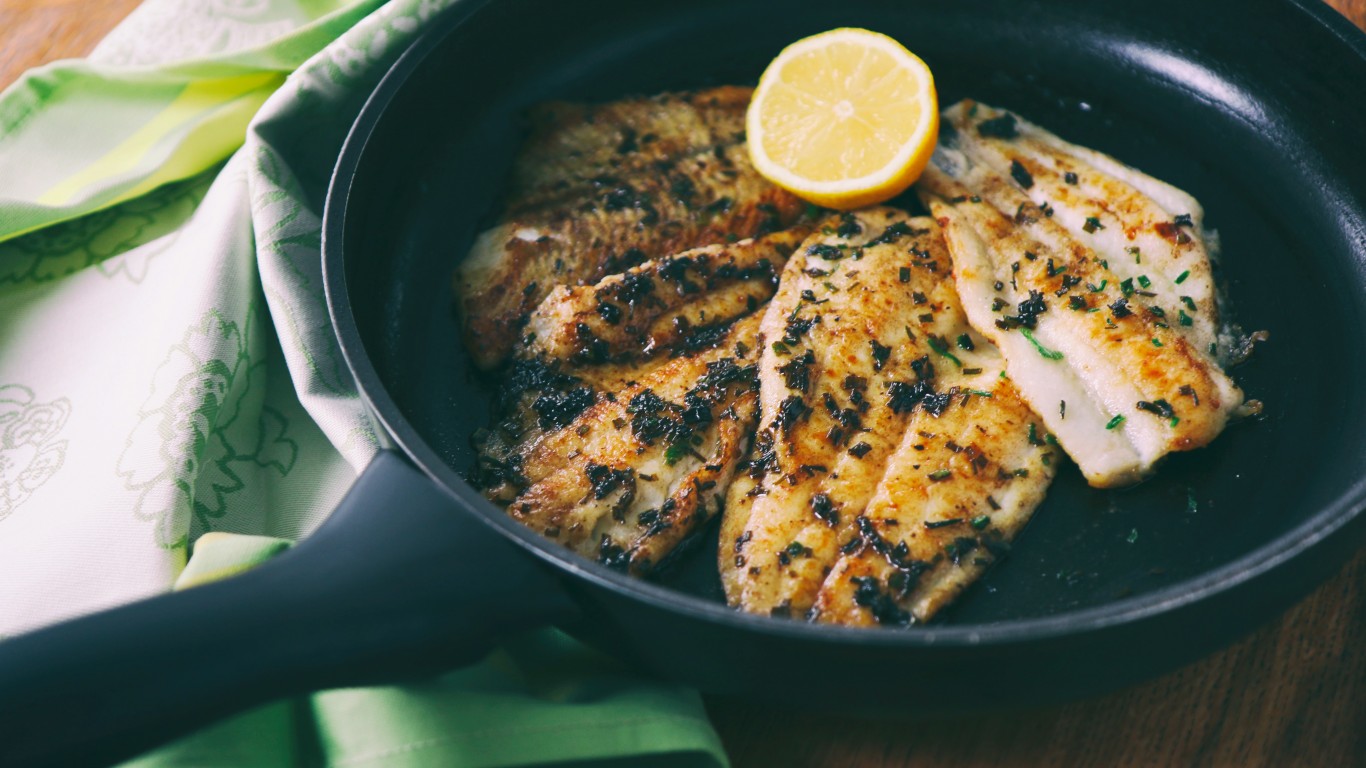
8. Pacific flounder
> Benefit: Low in calories, high in protein
> Farmed or wild-caught: Wild-caught
A versatile flatfish, flounder is less dense than many other fish, and therefore delivers fewer vitamins and minerals. It is an abundant source of “complete” protein, though, meaning that it contains all the essential amino acids, especially leucine and lysine. Avoid Atlantic flounder, whose stocks are threatened by overfishing, and which may contain toxins.

9. Pacific sole
> Benefit: Low in calories, high in protein
> Farmed or wild-caught: Wild-caught
Sole is a popular flatfish similar to flounder, mild-tasting and full of protein. As with flounder, fish caught in the Atlantic may be problematic for both health and environmental reasons.
[in-text-ad-2]

10. Shrimp
> Benefit: High in protein, low in calories and mercury
> Farmed or wild-caught: Farmed or wild-caught
Hugely popular around the world, shrimp is low in fatty acids, but is a good source of protein, iodine, and potassium. Imported farm-raised shrimp should be avoided, especially that from Southeast Asia, which may contain toxins and have negative environmental impact. Only about 10% of the shrimp eaten in America is wild-caught, but it is generally more flavorful than farmed.
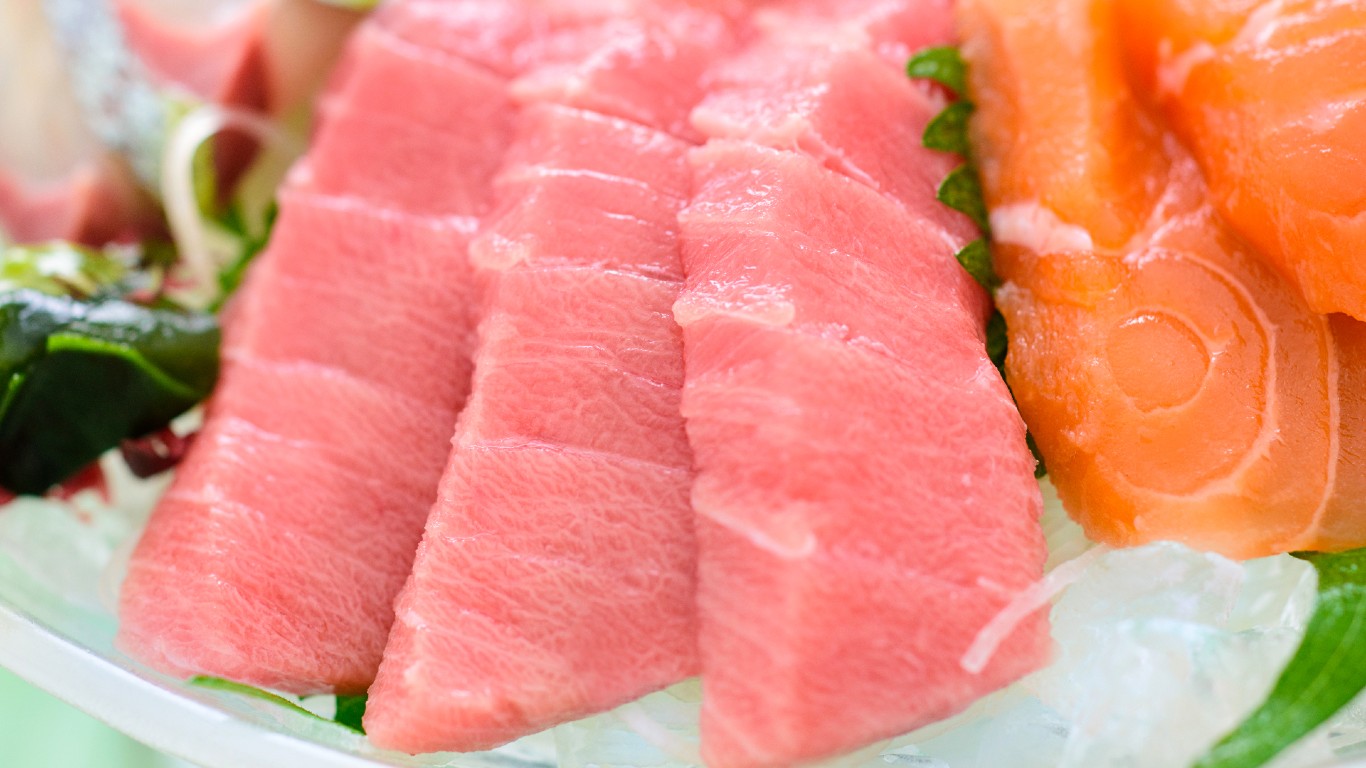
11. Albacore tuna (troll- or pole-caught)
> Benefit: Low in mercury, high in Omega-3
> Farmed or wild-caught: Wild-caught
Albacore tuna that is troll- or pole-caught tends to be younger and smaller than other tuna species, thus ensuring lower mercury levels. Like other tuna, it is a good source of Omega-3s.
[in-text-ad]

12. Oysters (farmed)
> Benefit: High in Omega-3s, protein, and other nutrients
> Farmed or wild-caught: Mostly farmed
Oysters are high in key nutrients, including iron, selenium, zinc, copper, and vitamins D and B-12. Not only that, but because they filter-feed, they also improve the water quality where they are found.

13. Farmed freshwater coho salmon
> Benefit: High in Omega-3s
> Farmed or wild-caught: Farmed
Using a novel tank-based system, freshwater coho salmon farms produce delicious and healthy salmon without the environmental and health risk factors associated with many other types of fish farms.

14. Atlantic Mackerel
> Benefit: High in Omega-3s and other fatty acids, high in niacin, phosphorus, selenium, and other nutrients, low in mercury
> Farmed or wild-caught: Wild-caught
Mackerel from the Atlantic (like Atka mackerel from Alaska) is an oily fish, rich in healthy long chain polyunsaturated fatty acids and low in mercury. King mackerel, on the other hand, while also full of nutrients, can have a very high mercury content and is best avoided.
[in-text-ad-2]
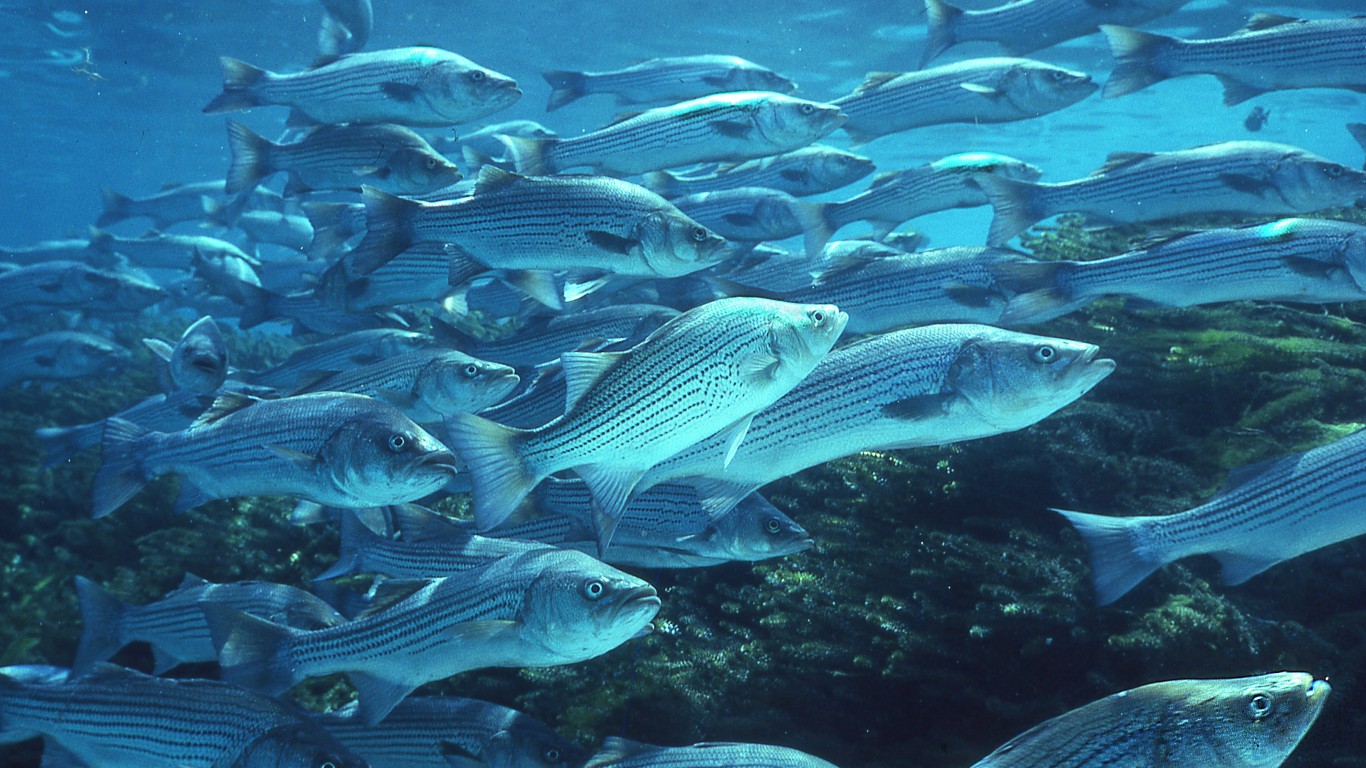
15. Striped Bass
> Benefit: High in selenium and Omega-3s
> Farmed or wild-caught: Farmed
Farmed striped bass has a mild flavor and is considered a good source of Omega-3s and other nutrients. The wild-caught fish, while prized for its richer flavor, can accumulate PCBs, mercury, and other toxins as it grows large. The FDA recommends eating no more than one serving a week of stripers caught in the wild.

16. Alaskan Pollock
> Benefit: High in lean protein, Omega-3s, and vitamin B-12
> Farmed or wild-caught: Wild-caught
This mild fish, related to cod and known for its use in fish sticks and other processed fish products, is caught wild in the northern Pacific. It is particularly high in B-12, and is considered mercury-safe.
[in-text-ad]

17. Arctic char
> Benefit: High in Omega-3s and carotenoids
> Farmed or wild-caught: Farmed
This high-fat fish, which resembles a cross between trout and salmon, is high in fatty acids and also carotenoids, the antioxidant pigments that give it its salmon-like color. Char is raised in on-shore tanks in the U.S., Canada, Iceland, and Norway that limit the level of contamination usually associated with farm fisheries.
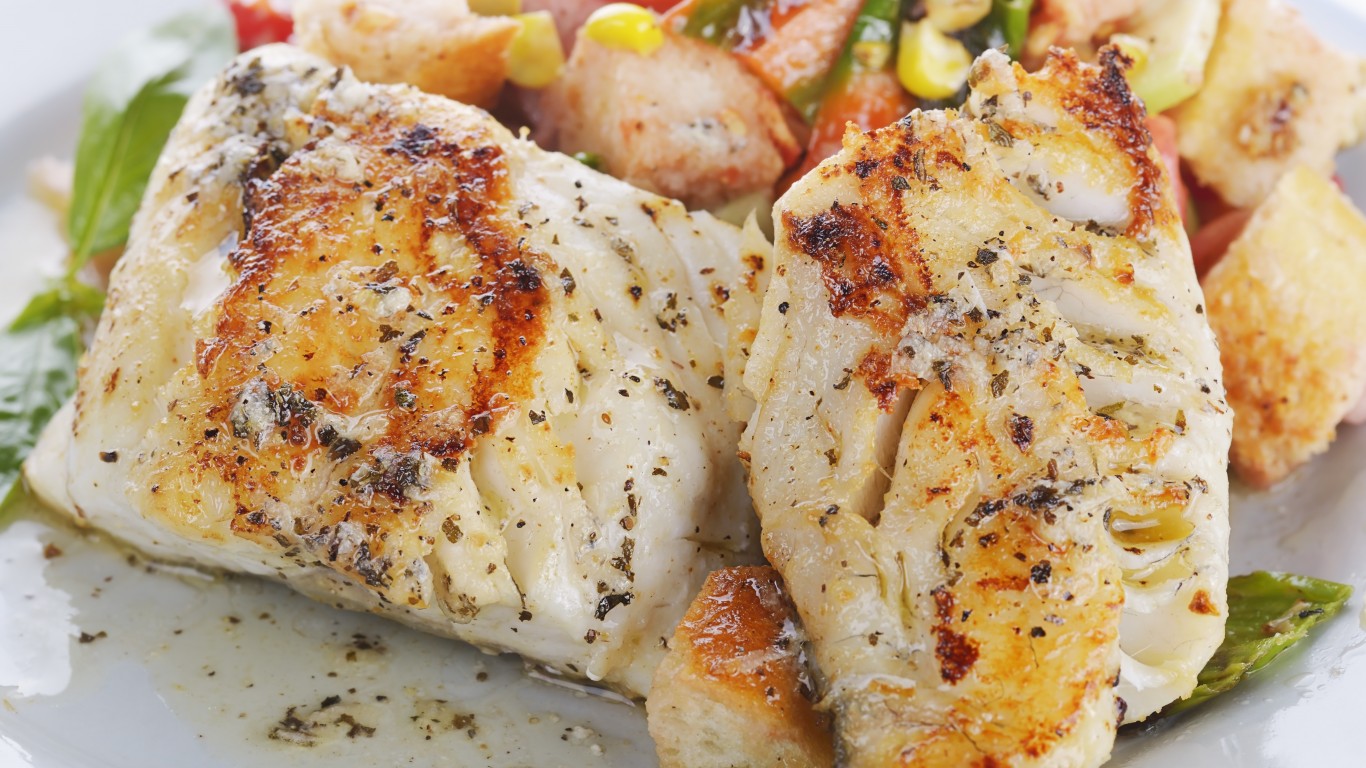
18. Mahi Mahi
> Benefit: Low in fat, high in protein and selenium
> Farmed or wild-caught: Wild-caught
Mahi-mahi is a tropical fish, low in calories and high in nutrients. It is also called a dolphinfish, though it has nothing to do with the mammal called dolphin.
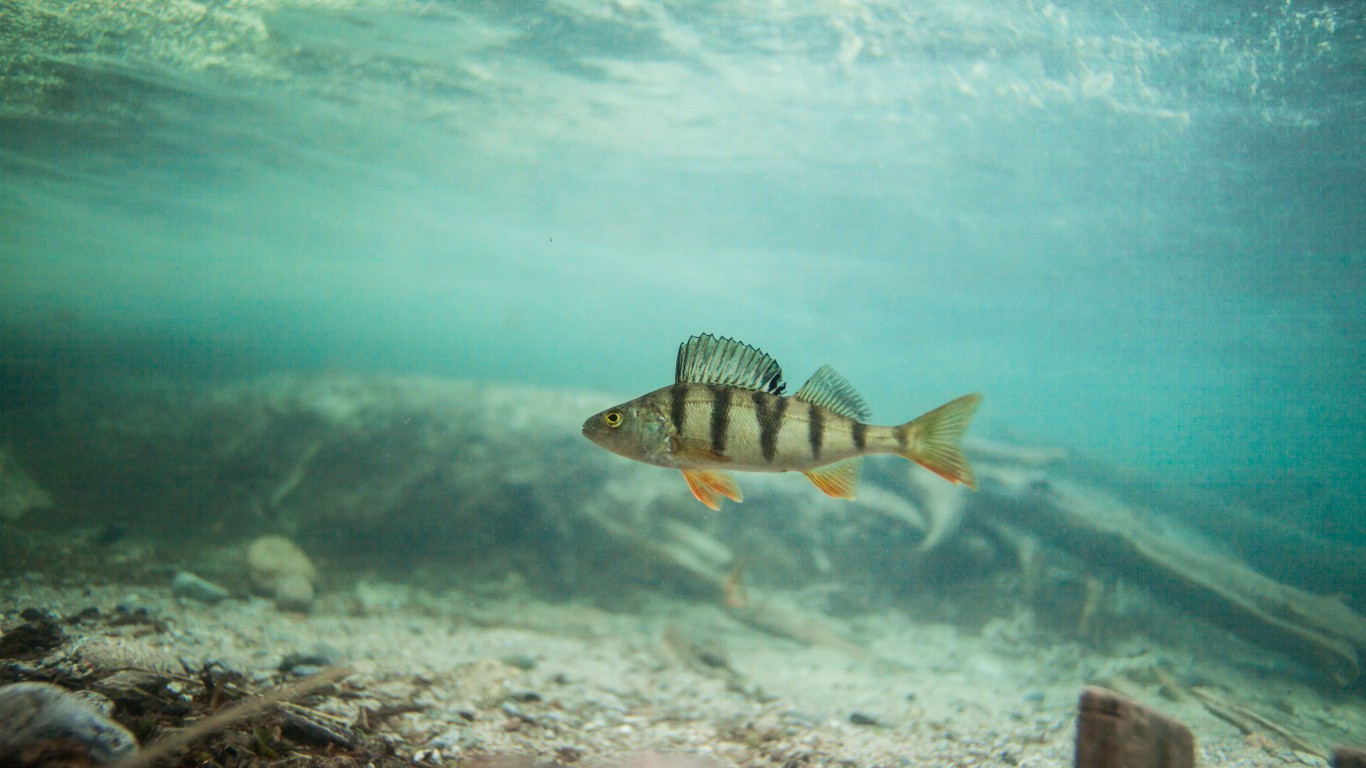
19. Ocean perch
> Benefit: High in vitamin B-12, selenium, and phosphorus
> Farmed or wild-caught: Wild-caught
Like other slow-growing fish, ocean perch has some mercury content, but it isn’t excessive, and an occasional perch dinner is justified by the fish’s high levels of other nutrients. It is low in Omega-3s. (Ocean perch isn’t to be confused with freshwater perch, which is unrelated.)
[in-text-ad-2]
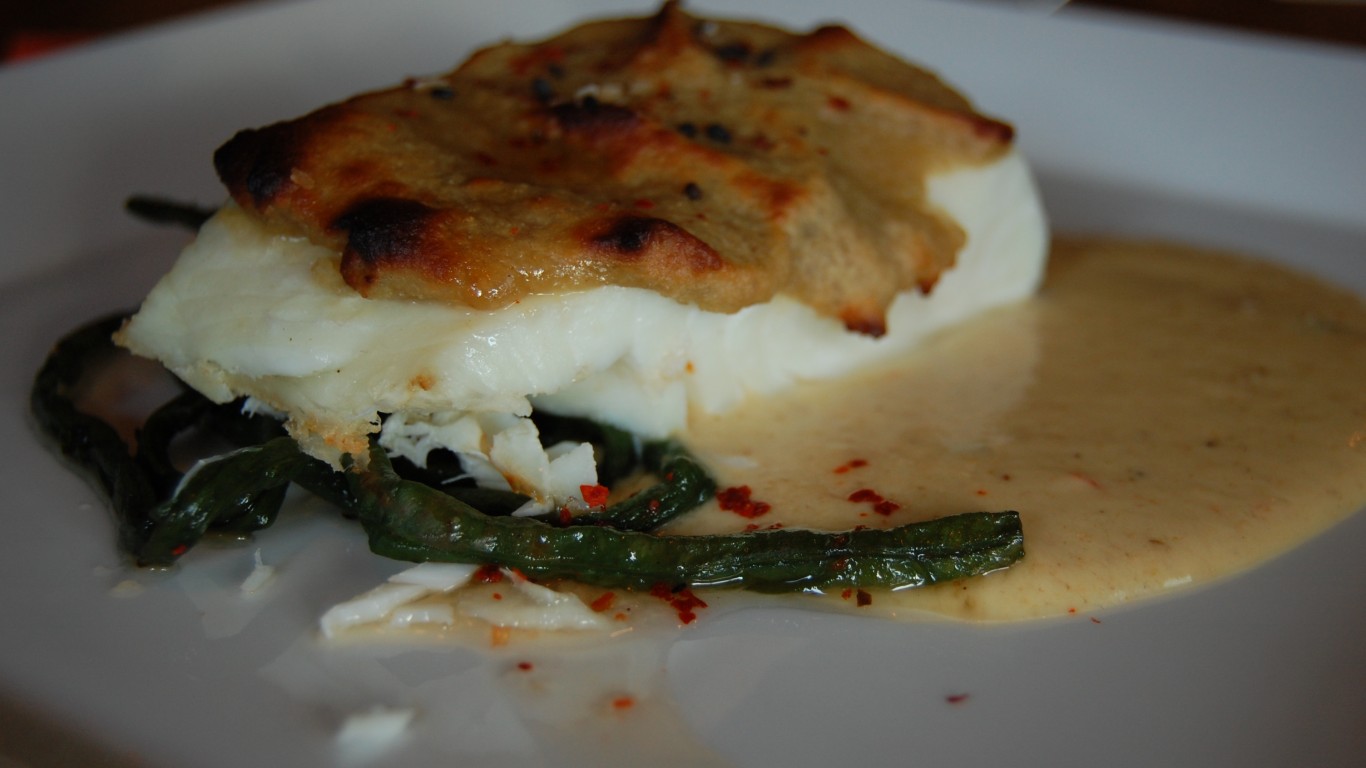
20. Pacific Halibut
> Benefit: High in protein, potassium, selenium, and vitamin D
> Farmed or wild-caught: Wild-caught
While Atlantic halibut has been overfished and may contain substantial quantities of mercury and/or PCBs, its mild-flavored Pacific cousin is high in protein and other nutrients, most notably, selenium. Like other large fish, it does contain mercury, but in somewhat smaller amounts than tuna.
Are You Ahead, or Behind on Retirement? (sponsor)
If you’re one of the over 4 Million Americans set to retire this year, you may want to pay attention.
Finding a financial advisor who puts your interest first can be the difference between a rich retirement and barely getting by, and today it’s easier than ever. SmartAsset’s free tool matches you with up to three fiduciary financial advisors that serve your area in minutes. Each advisor has been carefully vetted, and must act in your best interests. Start your search now.
Don’t waste another minute; get started right here and help your retirement dreams become a retirement reality.
Thank you for reading! Have some feedback for us?
Contact the 24/7 Wall St. editorial team.
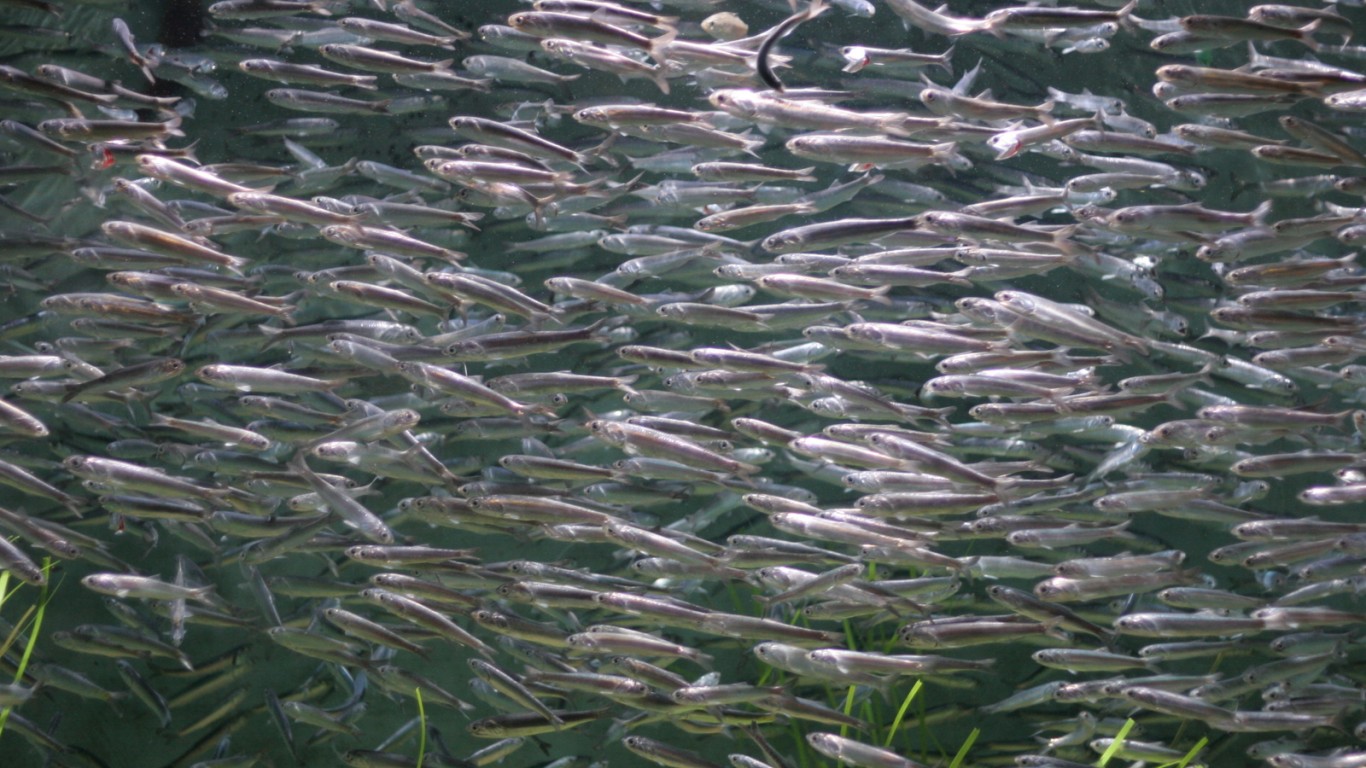
 24/7 Wall St.
24/7 Wall St. 24/7 Wall St.
24/7 Wall St.

